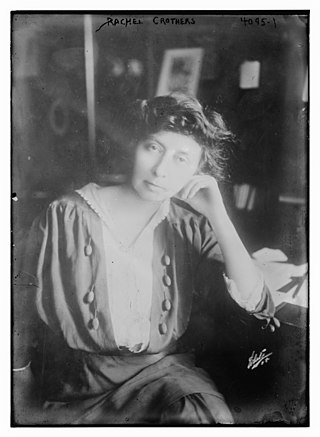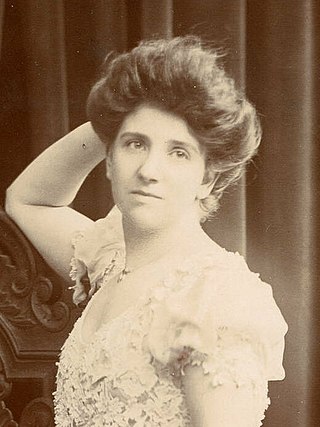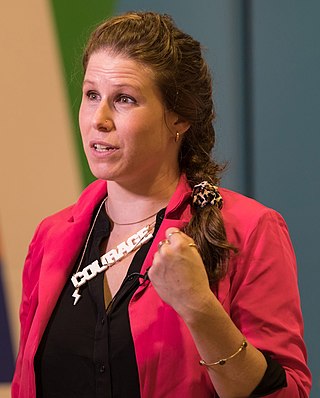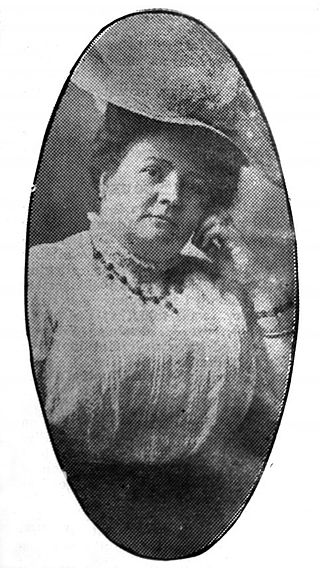Feminism is a range of socio-political movements and ideologies that aim to define and establish the political, economic, personal, and social equality of the sexes. Feminism holds the position that societies prioritize the male point of view and that women are treated unjustly in these societies. Efforts to change this include fighting against gender stereotypes and improving educational, professional, and interpersonal opportunities and outcomes for women.
La Ruffiana is an older female character of the Commedia dell'Arte with a shady past or who used to be a prostitute. She is used most often in relationship to the vecchi of which group she is a nominal member. Ruffiana is most often romantically involved with Pantalone, though his love may easily be unrequited if it suits the plot. She is generally described as being talkative/gossipy, sneaky, and mischievous, but deep down is actually kind. She has been described as an "outsider" that always mixes things up and causes trouble for the rest of the characters. "Her quips reek of garlic"
The history of feminism comprises the narratives of the movements and ideologies which have aimed at equal rights for women. While feminists around the world have differed in causes, goals, and intentions depending on time, culture, and country, most Western feminist historians assert that all movements that work to obtain women's rights should be considered feminist movements, even when they did not apply the term to themselves. Some other historians limit the term "feminist" to the modern feminist movement and its progeny, and use the label "protofeminist" to describe earlier movements.
Second-wave feminism was a period of feminist activity that began in the early 1960s and lasted roughly two decades before ushering in a third wave of feminism beginning in the early 1990s. It took place throughout the Western world, and aimed to increase equality for women by building on previous feminist gains in the late 19th and early 20th centuries.

Transfeminism, or trans feminism, is a branch of feminism focused on transgender women and informed by transgender studies. Transfeminism focuses on the effects of transmisogyny and patriarchy on trans women. It is related to the broader field of queer theory. The term was popularized by Emi Koyama in The Transfeminist Manifesto.
First-wave feminism was a period of feminist activity and thought that occurred during the 19th and early 20th century throughout the Western world. It focused on legal issues, primarily on securing women's right to vote. The term is often used synonymously with the kind of feminism espoused by the liberal women's rights movement with roots in the first wave, with organizations such as the International Alliance of Women and its affiliates. This feminist movement still focuses on equality from a mainly legal perspective.
Postfeminism is a term popularized by the mass media to describe an alleged decrease in support for feminism from the 1990s onwards. It can be considered a critical way of understanding the changed relations between feminism, popular culture and femininity. The term is sometimes confused with subsequent feminisms such as fourth-wave feminism, postmodern feminism, and xenofeminism.

Adela Constantia Mary Walsh was a British born suffragette who worked as a political organiser for the WSPU in Scotland. In 1914 she moved to Australia where she continued her activism and was co-founder of both the Communist Party of Australia and the Australia First Movement.

Rachel Crothers was an American playwright and theater director known for her well-crafted plays that often dealt with feminist themes. Among theater historians, she is generally recognized as "the most successful and prolific woman dramatist writing in the first part of the twentieth century." One of her most famous plays was Susan and God (1937), which was made into a film by MGM in 1940 starring Joan Crawford and Fredric March.
Lipstick feminism is a variety of feminism that seeks to embrace traditional concepts of femininity, including the sexual power of women, alongside traditional feminist ideas. The concept emerged within the third-wave as a response to ideals created by previous movements, where women felt that they could not both be feminine and a feminist.

A movement to fight for women's right to vote in the United Kingdom finally succeeded through acts of Parliament in 1918 and 1928. It became a national movement in the Victorian era. Women were not explicitly banned from voting in Great Britain until the Reform Act 1832 and the Municipal Corporations Act 1835. In 1872 the fight for women's suffrage became a national movement with the formation of the National Society for Women's Suffrage and later the more influential National Union of Women's Suffrage Societies (NUWSS). As well as in England, women's suffrage movements in Wales, Scotland and other parts of the United Kingdom gained momentum. The movements shifted sentiments in favour of woman suffrage by 1906. It was at this point that the militant campaign began with the formation of the Women's Social and Political Union (WSPU).

Josephine Lovett was an American scenario writer, adapter, screenwriter and actress, active in films from 1916 to 1935. She was married to Canadian-born director, John Stewart Robertson. She is best known for her then-risqué film Our Dancing Daughters in 1928. Her screenplays typically included a heroine who was oftentimes economically and sexually independent.

Caroline Emma Criado Perez is a British feminist author, journalist and activist. Her first national campaign, the Women's Room project, aimed to increase the presence of female experts in the media. She opposed the removal of the only woman from British banknotes, leading to the Bank of England's swift announcement that the image of Jane Austen would appear on the £10 note by 2017. That campaign led to sustained harassment on the social networking website Twitter of Criado Perez and other women; as a result, Twitter announced plans to improve its complaint procedures. Her most recent campaign was for a sculpture of a woman in Parliament Square; the statue of Millicent Fawcett was unveiled in April 2018, as part of the centenary celebrations of the winning of women's suffrage in the United Kingdom. Her 2019 book Invisible Women: Exposing Data Bias in a World Designed for Men was a Sunday Times bestseller.

Sadie Kneller Miller was a Baltimore journalist, known for being one of the earliest female baseball reporters, as well as the only female correspondent covering some international events.

The feminist movement, also known as the women's movement, refers to a series of social movements and political campaigns for radical and liberal reforms on women's issues created by the inequality between men and women. Such issues are women's liberation, reproductive rights, domestic violence, maternity leave, equal pay, women's suffrage, sexual harassment, and sexual violence. The movement's priorities have expanded since its beginning in the 1800s, and vary among nations and communities. Priorities range from opposition to female genital mutilation in one country, to opposition to the glass ceiling in another.

The socio-political movements and ideologies of feminism have found expression in various media. These media include newspaper, literature, radio, television, social media, film, and video games. They have been essential to the success of many feminist movements.
White feminism is a term which is used to describe expressions of feminism which are perceived as focusing on white women but are perceived as failing to address the existence of distinct forms of oppression faced by ethnic minority women and women lacking other privileges. The term has been used to label and criticize theories that are perceived as focusing solely on gender-based inequality. Primarily used as a derogatory label, "white feminism" is typically used to reproach a perceived failure to acknowledge and integrate the intersection of other identity attributes into a broader movement which struggles for equality on more than one front. In white feminism, the oppression of women is analyzed through a single-axis framework, consequently erasing the identity and experiences of ethnic minority women the space. The term has also been used to refer to feminist theories perceived to focus more specifically on the experience of white, cisgender, heterosexual, able-bodied women, and in which the experiences of women without these characteristics are excluded or marginalized. This criticism has predominantly been leveled against the first waves of feminism which were seen as centered around the empowerment of white middle-class women in Western societies.

The statue of Millicent Fawcett in Parliament Square, London, honours the British suffragist leader and social campaigner Dame Millicent Fawcett. It was made in 2018 by Gillian Wearing. Following a campaign and petition by the activist Caroline Criado Perez, the statue's creation was endorsed by both the Prime Minister of the United Kingdom, Theresa May, and the Mayor of London, Sadiq Khan. The statue, Parliament Square's first monument to a woman and also its first sculpture by a woman, was funded through the government's Centenary Fund, which marks 100 years since some women won the right to vote. The memorial was unveiled on 24 April 2018.